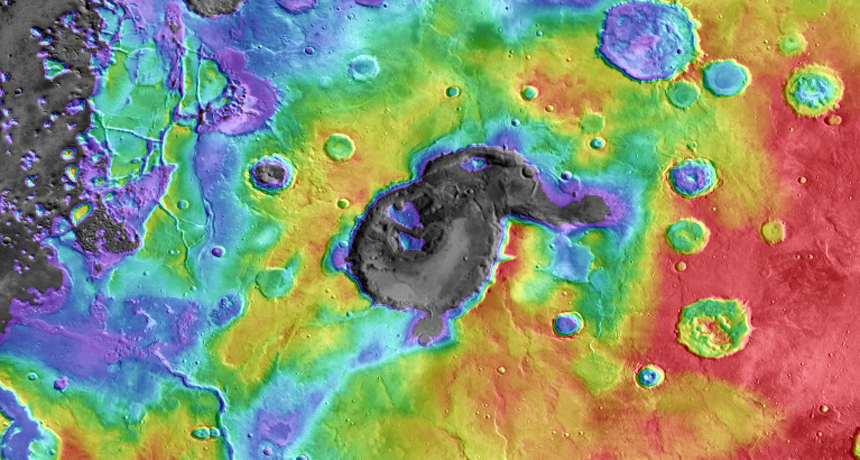Supervolcanoes once erupted on Mars
Giant eruptions billions of years ago left behind huge craters

GIANT ERUPTION Billions of years ago, ancient supervolcanoes erupted on Mars, digging huge pits into the planet’s surface. One such crater (center, colored gray to show low elevation) stretches about 70 km in diameter, and reaches 1.8 km deep. Colors of surrounding land represent the range of elevations, from high (red) to low (purple-gray).
Arizona State University, GSFC and JPL/NASA







